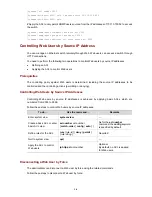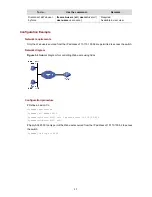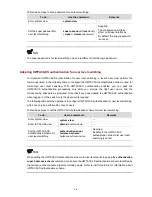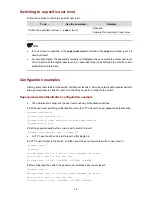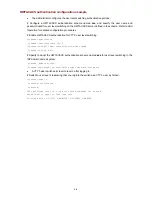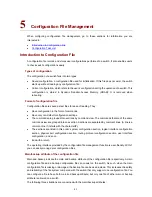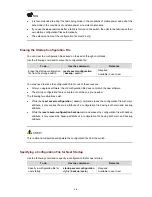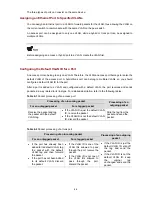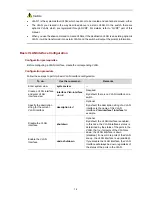
6
VLAN Overview
Thi chapter covers the
s
se topics:
VLAN Overview
z
z
Port-Based VLAN
Introd
ll hosts are in the same broadcast domain and
conn
z
ket or an unknown unicast packet
of the switch, it will forward the
The
ld result in the following network problems.
dcast packets
tly. Therefore, using routers to isolate broadcast domains has many limitations.
sts in different VLANs cannot communicate with each other directly but need the help
of network layer devices, such as routers and Layer 3 switches.
Figure 6-1
VLAN Overview
uction to VLAN
The traditional Ethernet is a broadcast network, where a
connected with each other through hubs or switches. Hubs and switches, which are the basic network
ection devices, have limited forwarding functions.
z
A hub is a physical layer device without the switching function, so it forwards the received packet to
all ports except the inbound port of the packet.
A switch is a link layer device which can forward a packet according to the MAC address of the
packet. However, when the switch receives a broadcast pac
whose MAC address is not included in the MAC address table
packet to all the ports except the inbound port of the packet.
above scenarios cou
z
Large quantity of broadcast packets or unknown unicast packets may exist in a network, wasting
network resources.
z
A host in the network receives a lot of packets whose destination is not the host itself, causing
potential serious security problems.
Isolating broadcast domains is the solution for the above problems. The traditional way is to use routers,
which forward packets according to the destination IP address and does not forward broa
in the link layer. However, routers are expensive and provide few ports, so they cannot split the network
efficien
The Virtual Local Area Network (VLAN) technology is developed for switches to control broadcasts in
LANs.
A VLAN can span multiple physical spaces. This enables hosts in a VLAN to be located in different
physical locations.
By creating VLANs in a physical LAN, you can divide the LAN into multiple logical LANs, each of which
has a broadcast domain of its own. Hosts in the same VLAN communicate in the traditional Ethernet
way. However, ho
illustrates a VLAN
implementation.
6-1



